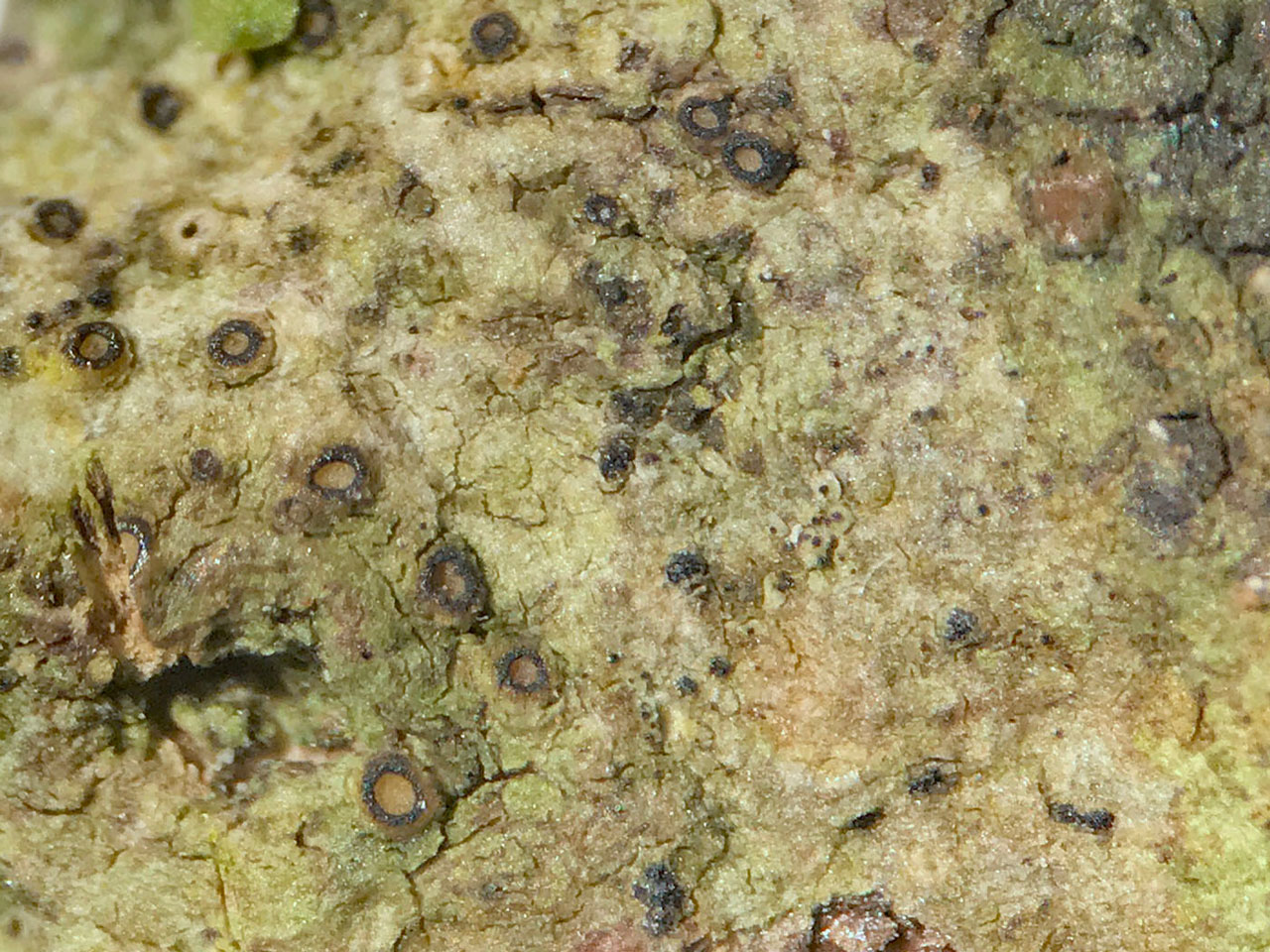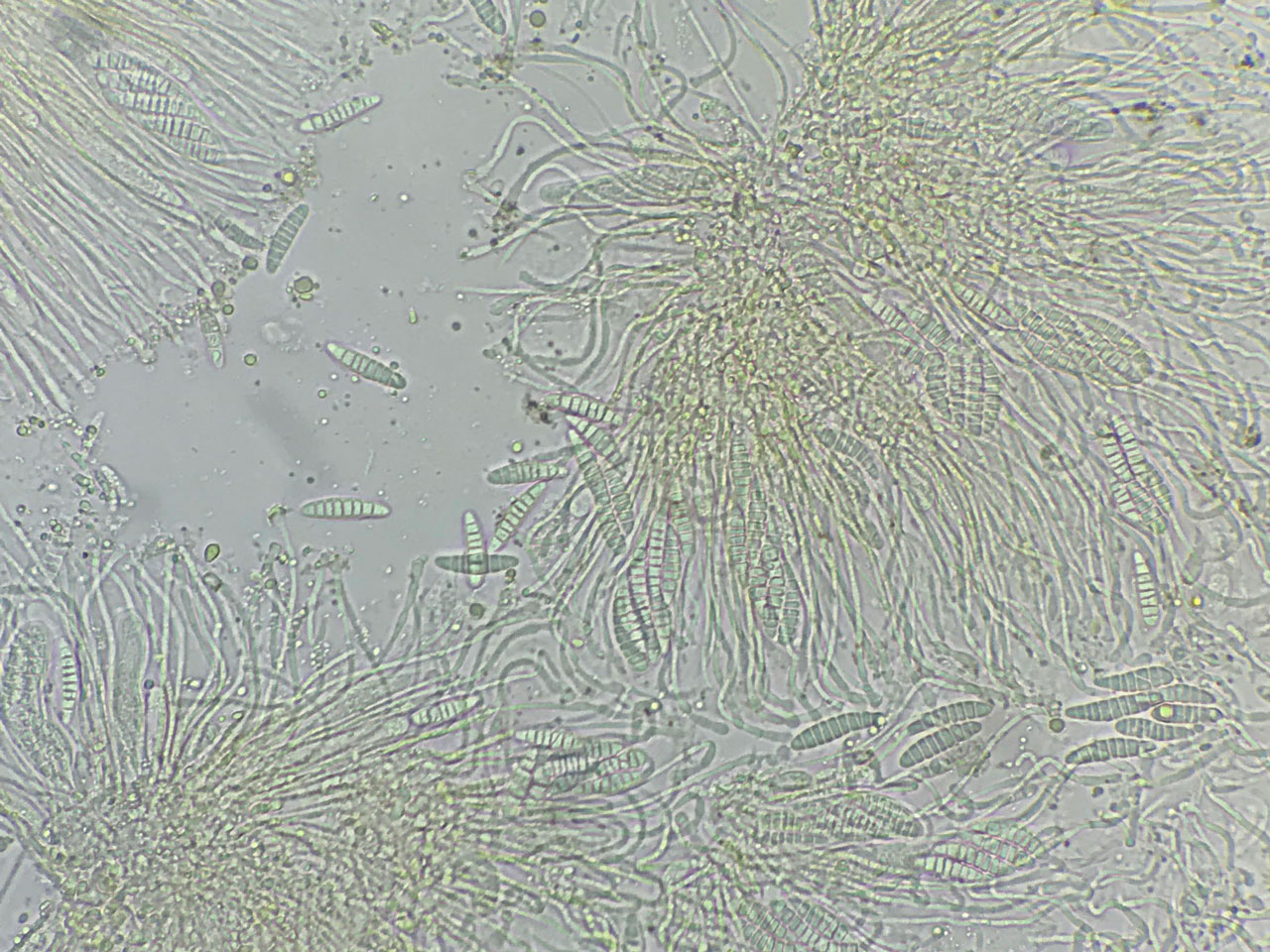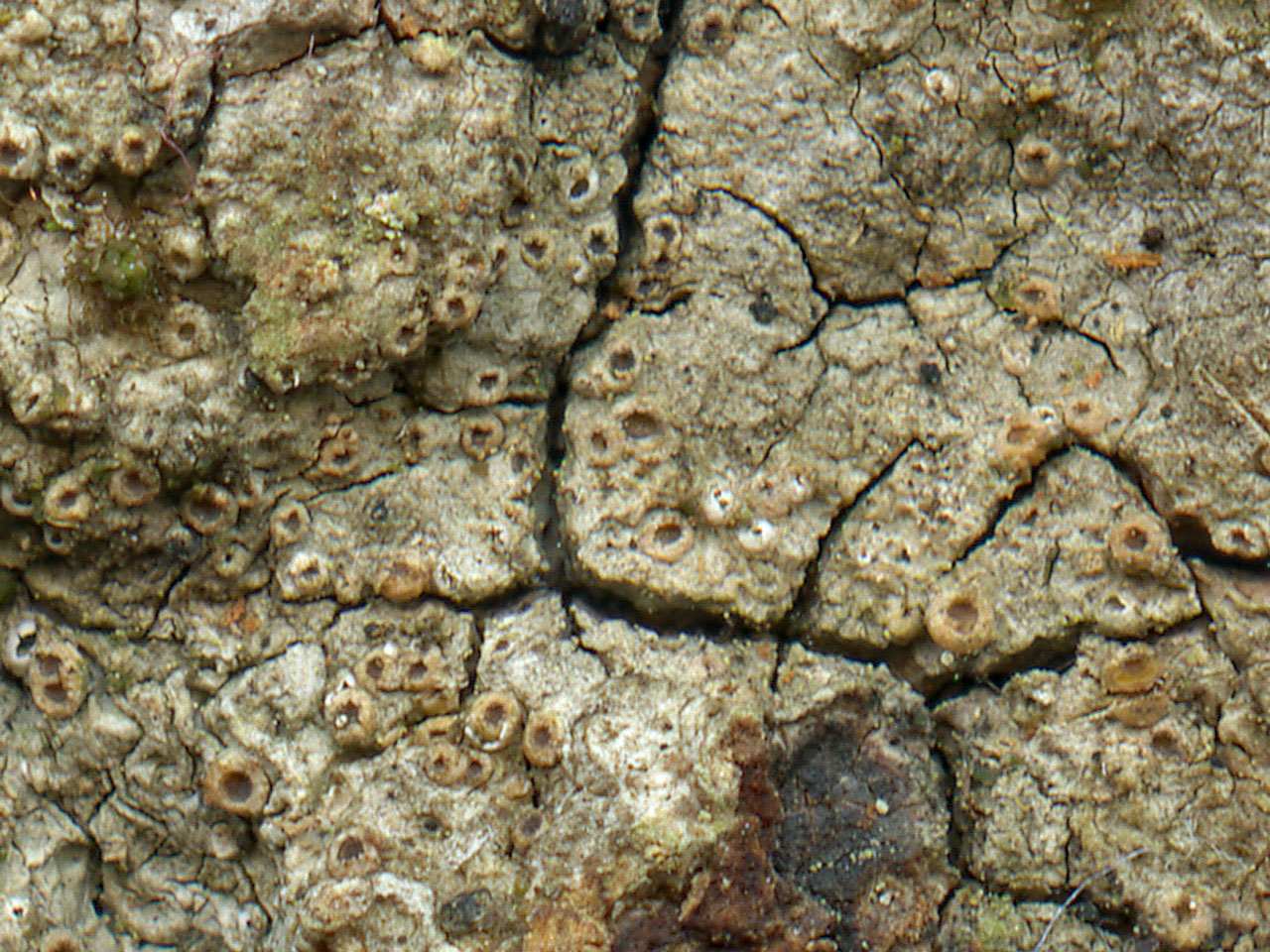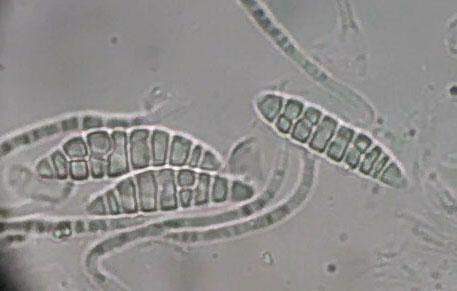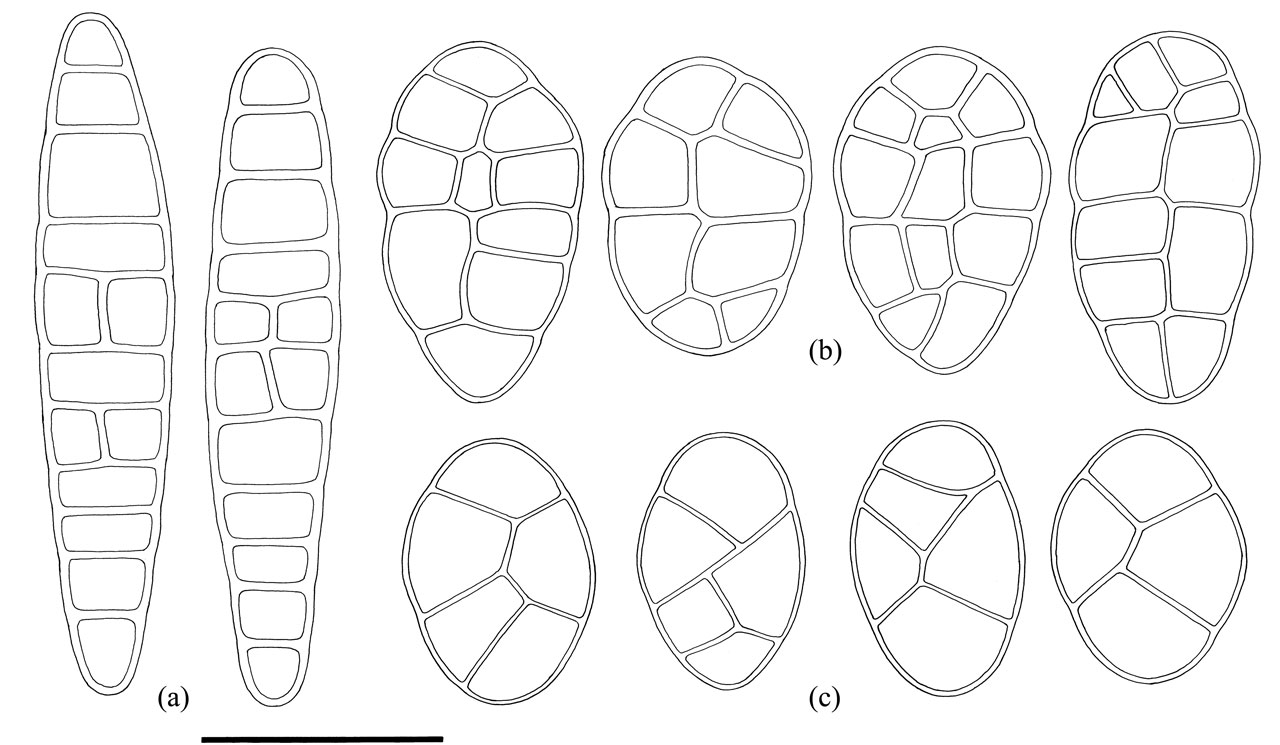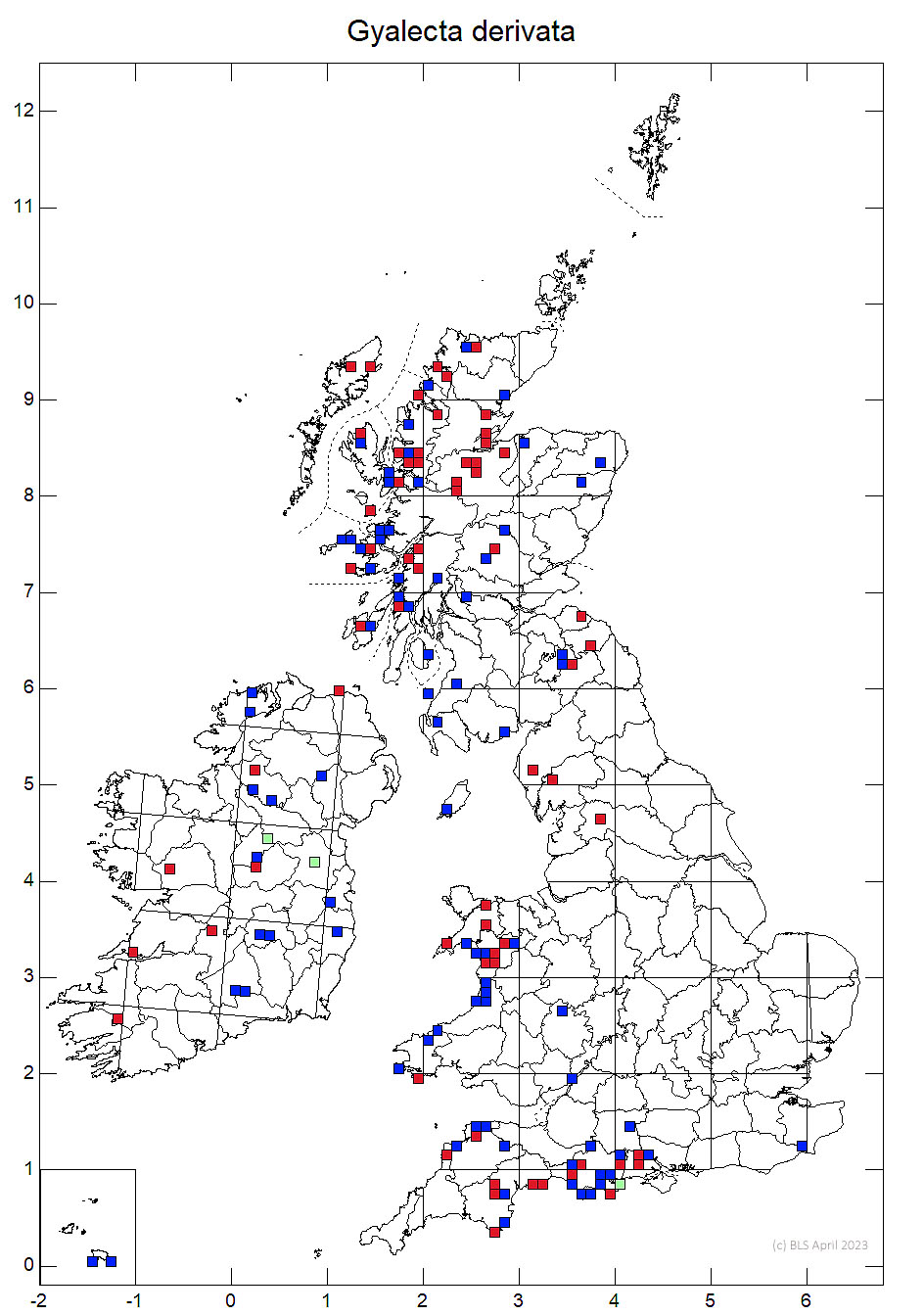A tiny Gyalecta found in wound tracks on old trees in woodlands and on field trees. Easily overlooked as both inaparent and as the common Gyalecta truncigena, but G. derivata typically has paler more buff coloured apothecia and has fusiform spores that are not muriform, or only with an occasional longitudinal septum, while G. truncigena has more cylindrical fully muriform spores.
Thallus thin or somewhat scurfy, smooth or immersed and then inconspicuous, pale grey or green-grey. Apothecia 0.2–0.3 mm diam., scattered or confluent, ± immersed at first, becoming emergent; disc 0.2–0.4 mm diam., urceolate, with a well-developed raised smooth and pale or concolorous true exciple, buff to orange. Ascospores 21–31 (–33) × (3–) 4–6 µm, (5-) 7- to 13-septate, cylindric-fusiform, with an occasional single longitudinal septum.
Pachyphiale fagicola is similar, but has 16- or more spored asci. The apothecia of the doubtfully lichenized Karstenia rhopaloides (syn. Ramonia interjecta, Stictidaceae) are larger (0.4–0.7 mm diam.), the ascospores larger (24–43 × 4–6 µm) and the spores generally rounded at one end.
On bark of wayside broad-leaved trees, particularly nutrient-rich or wounded trunks of Ash and Sycamore, also wounded trees in older woodlands including Ash, Beech and Holly and very rarely on flushed moss on slightly base enriched siliceous rock .

Local. W. Britain, rare in E. Scotland, scattered in Ireland.
This can be quite a difficult species to spot and is probably under recorded but appears to be genuinely scarce.
Britain: Notable
Cannon, P., Coppins, B., Aptroot, A., Sanderson, A. & Simkin, J. (2024). Ostropales genera I, including Absconditella, Belonia, Clathroporinopsis, Corticifraga, Cryptodiscus, Cryptolechia, Francisrosea, Gomphillus, Gyalecta, Gyalidea, Gyalideopsis, Jamesiella, Karstenia, Nanostictis, Neopetractis, Pachyphiale, Petractis, Phialopsis, Phlyctis, Ramonia, Sagiolechia, Secoliga, Sphaeropezia, Spirographa, Stictis, Thelopsis, Thrombium and Xerotrema. Revisions of British and Irish Lichens 38: 1–60.
Text by Neil A Sanderson based on Cannon et al (2024)
